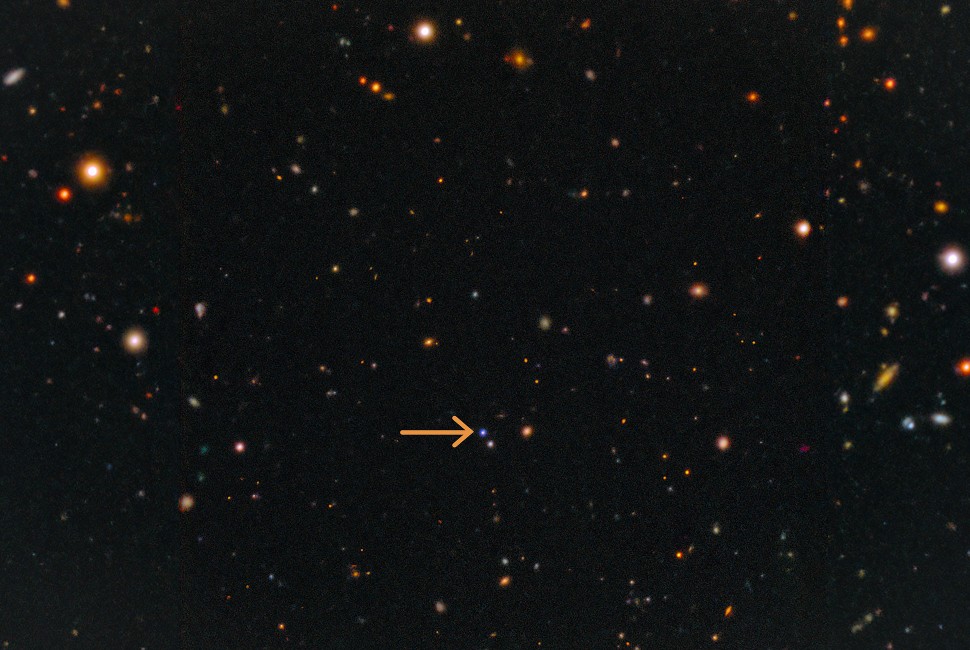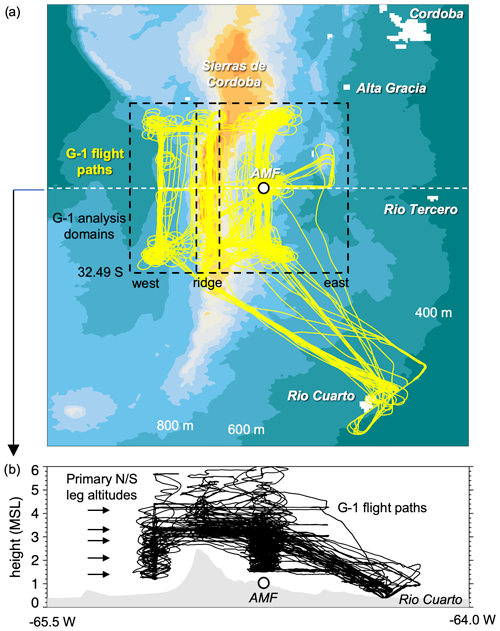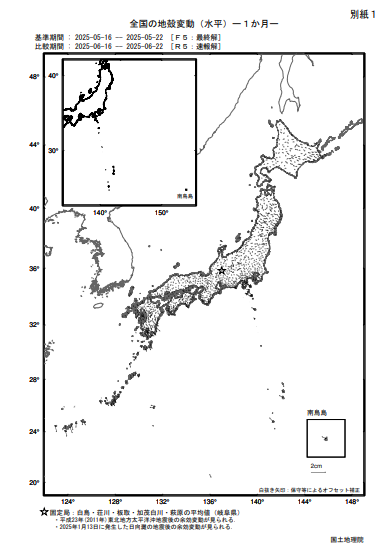2025-07-07 ノースウェスタン大学

Marked with an orange arrow, the blue dot is the the fast X-ray transient EP 250108a, and the supernova that followed it. Using a combination of telescopes, astronomers found fast X-ray transients can result from the ‘failed’ explosive death of a massive star. Image by International Gemini Observatory/NOIRLab/NSF/AURA
<関連情報>
- https://news.northwestern.edu/stories/2025/07/supernovas-trapped-jet-reveals-source-of-fast-x-ray-transient/
- https://arxiv.org/abs/2504.08889
- https://arxiv.org/abs/2504.08886
EP 250108a/SN 2025kg: アインシュタイン・プローブによる高速X線過渡現象後の最も近傍の広線型Ic型超新星の観測 EP 250108a/SN 2025kg: Observations of the most nearby Broad-Line Type Ic Supernova following an Einstein Probe Fast X-ray Transient
J. C. Rastinejad (Northwestern), A. J. Levan, P. G. Jonker, C. D. Kilpatrick, C. L. Fryer, N. Sarin, B. P. Gompertz, C. Liu, R. A. J. Eyles-Ferris, W. Fong, E. Burns, J. H. Gillanders, I. Mandel, D. B. Malesani, P. T. O’Brien, N. R. Tanvir, K. Ackley, A. Aryan, F. E. Bauer, S. Bloemen, T. de Boer, C. R. Bom, J. A. Chacon, K. Chambers, T.-W. Chen, A. A. Chrimes, J. N. D. van Dalen, V. D’Elia, M. De Pasquale, M. D. Fulton, P. J. Groot, R. Gupta, D. H. Hartmann, A. P. C. van Hoof, M. E. Huber, L. Izzo, W. Jacobson-Galan, P. Jakobsson, A. Kong, T. Laskar, T. B. Lowe, E. A. Magnier, E. Maiorano, A. Martin-Carrillo, L. Mas-Ribas, D. Mata Sanchez, M. Nicholl, C. J. Nixon, S. R. Oates, G. Paek, J. Palmerio, D. Paris, D. L. A. Pieterse, G. Pugliese, J. A. Quirola Vasquez, J. van Roestel, A. Rossi, A. Rouco Escorial. R. Salvaterra, B. Schneider, S. J. Smartt, K. Smith, I. A. Smith, S. Srivastav, M. A. P. Torres, C. Ventura, P. Vreeswijk, R. Wainscoat, Y.-J. Yang, S. Yang
arXiv last revised 17 Jun 2025 (this version, v4)
DOI:https://doi.org/10.48550/arXiv.2504.08889
ABSTRACT
With a small sample of fast X-ray transients (FXTs) with multi-wavelength counterparts discovered to date, their progenitors and connections to γ-ray bursts (GRBs) and supernovae (SNe) remain ambiguous. Here, we present photometric and spectroscopic observations of SN 2025kg, the SN counterpart to the FXT EP 250108a. At z = 0.17641, this is the closest known SN discovered following an Einstein Probe (EP) FXT. We show that SN 2025kg’s optical spectra reveal the hallmark features of a broad-lined Type Ic SN. Its light curve evolution and expansion velocities are comparable to those of GRB-SNe, including SN 1998bw, and two past FXT SNe. We present JWST/NIRSpec spectroscopy taken around SN 2025kg’s maximum light, and find weak absorption due to He I λ1.0830, λ2.0581 µm and a broad, unidentified emission feature at ∼ 4–4.5 µm. Further, we observe broadened Hα in optical data at 42.5 days that is not detected at other epochs, indicating interaction with H-rich material. From its light curve, we derive a 56Ni mass of 0.2 – 0.6 M⊙. Together with our companion paper (Eyles-Ferris et al. 2025), our broadband data are consistent with a trapped or low energy (≲ 1051 ergs) jet-driven explosion from a collapsar with a zero-age main sequence mass of 15–30 M⊙. Finally, we show that the sample of EP FXT SNe support past estimates that low-luminosity jets seen through FXTs are more common than successful (GRB) jets, and that similar FXT-like signatures are likely present in at least a few percent of the brightest Ic-BL SNe.
カンガルーの最初の跳躍:EP250108a/SN 2025kgの初期高速冷却段階 The kangaroo’s first hop: the early fast cooling phase of EP250108a/SN 2025kg
Rob A. J. Eyles-Ferris, Peter G. Jonker, Andrew J. Levan, Daniele Bjørn Malesani, Nikhil Sarin, Christopher L. Fryer, Jillian C. Rastinejad, Eric Burns, Nial R. Tanvir, Paul T. O’Brien, Wen-fai Fong, Ilya Mandel, Benjamin P. Gompertz, Charles D. Kilpatrick, Steven Bloemen, Joe S. Bright, Francesco Carotenuto, Gregory Corcoran, Laura Cotter, Paul J. Groot, Luca Izzo, Tanmoy Laskar, Antonio Martin-Carrillo, Jesse Palmerio, Maria E. Ravasio, Jan van Roestel, Andrea Saccardi, Rhaana L. C. Starling, Aishwarya Linesh Thakur, Susanna D. Vergani, Paul M. Vreeswijk, Franz E. Bauer, Sergio Campana, Jennifer A. Chacón, Ashley A. Chrimes, Stefano Covino, Joyce N. D. van Dalen, Valerio D’Elia, Massimiliano De Pasquale, Nusrin Habeeb, Dieter H. Hartmann, Agnes P. C. van Hoof, Páll Jakobsson, Yashaswi Julakanti, Giorgos Leloudas, Daniel Mata Sánchez, Christopher J. Nixon, Daniëlle L. A. Pieterse, Giavanna Pugliese, Jonathan Quirola-Vásquez, Ben C. Rayson, Ruben Salvaterra, Ben Schneider, Manuel A. P. Torres, Tayyaba Zafar
arXiv last revised 26 Jun 2025 (this version, v4)
DOI:https://doi.org/10.48550/arXiv.2504.08886
ABSTRACT
Fast X-ray transients (FXTs) are a rare and poorly understood population of events. Previously difficult to detect in real time, the launch of the Einstein Probe with its wide field X-ray telescope has led to a rapid expansion in the sample and allowed the exploration of these transients across the electromagnetic spectrum. EP250108a is a recently detected example linked to an optical counterpart, SN 2025kg, or ‘the kangaroo’. Together with a companion paper (Rastinejad et al. 2025), we present our observing campaign and analysis of this event. In this letter, we focus on the early evolution of the optical counterpart over the first six days, including our measurement of the redshift of z = 0.17641. We compare to other supernovae and fast transients showing similar features, finding significant similarities with SN 2006aj and SN 2020bvc, and show that the source is well-modelled by a rapidly expanding cooling blackbody. We show the observed X-ray and radio properties are consistent with a collapsarpowered jet that is low energy (≲ 1051 erg) and/or fails to break out of the dense material surrounding it. While we examine the possibility that the optical emission emerges from the shock produced as the supernova ejecta expand into a dense shell of circumstellar material, due to our X-ray and radio inferences, we favour a model where it arises from a shocked cocoon resulting from the trapped jet. This makes SN 2025kg one of the few examples of this currently observationally rare event.



